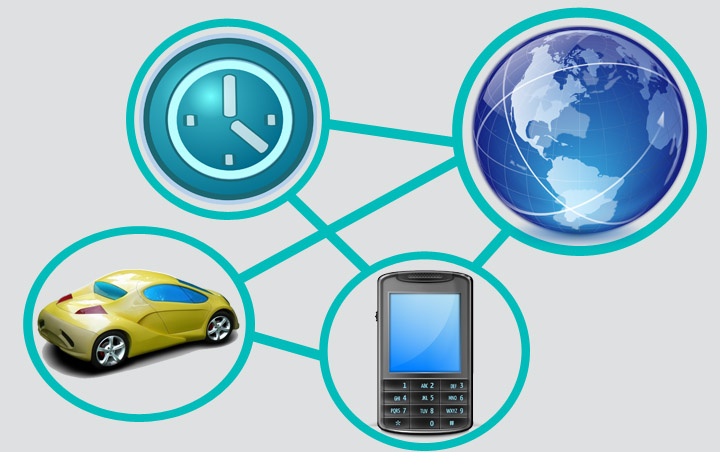TORONTO – The Internet of Things (IoT) is one of the fastest growing areas of tech – covering everything from consumer wearable devices, to high-tech industrial systems.

The growing network of connected objects referred to as the “Internet of Things” is estimated to be in the billions by 2020. But, as more and more devices are classified under the IoT umbrella, security concerns around these connected devices continue to grow.
Global News spoke with Chris Young, general manager of Intel Security Group, about what the security industry is doing to ensure the Internet of Things is secure and what consumers need to know about connected devices.
The so-called “Internet of Things” is one of the fastest growing areas of technology right now. What does this mean for the security industry?
“We’ve always had to keep up with changes in the IT landscape, so as every technology shift has happened – as we’ve moved to the cloud, as we’ve become more mobile – the security model has to evolve with that,” Young told Global News.
“IoT covers everything from large scale industrial control systems, to consumer wearables. It’s everything – we are connecting devices, things, applications, and people in ways that they’ve never been connected in the past.”
Young pointed out that the security model for each area would be very different – of course, the security structure surrounding health care and industrial devices would greatly vary from that of consumer devices.
READ MORE: Internet of Things has potential but raises security, privacy issues
But Young said one thing they all have in common is the challenge of the sheer volume of data these devices can collect.
Consumer devices in particular – from fitness trackers, to home appliances – are generating more granular information. And when that information is about people, or their health, it’s more sensitive.
“There’s one thing you are going to learn about someone from having malware on their PC; but there’s another thing you’re going to learn about them if you were able to get access to data coming off of a wearable device,” said Young.
“We have the added challenge of our adversaries becoming more sophisticated, more evolved, more funded and more skilled in the ways of which they are attacking us. So that creates a bigger challenge for the security industry.”
How is the security industry addressing the issue of just now much data these devices are collecting?
Young said the industry as a whole must focus first on designing products that are made with security in mind.
“We have to start thinking about what aspects of security technology and features we need to build into the underlying infrastructure,” said Young.
“This is where Intel comes into it. Intel is building the chips, or microprocessors, that are going into these connected devices – everything from wearables, to connected vehicles, to industrial system environments. We are working with other parts of Intel’s businesses, particularly our IoT group, to embed certain security capabilities.”
What should the average Canadian consumer know about security and the “Internet of Things?”
“I don’t like to tell people to worry. What I think people need to do is be smart and be educated on these subjects,” he said.
“If you think about it, we haven’t eradicated security issues in our physical lives – we still have crime that happens on the street – but we’ve reached an equilibrium where the average person knows what to do if something happens to them. In cyberspace we are moving from a world where we had zero understanding, to where ultimately we will reach the right equilibrium, but we’re not there yet.”
Young said the first thing consumers should do is educate themselves about the basics of cybersecurity.
READ MORE: Connected ‘things’ face hacking on Internet
Things like how to spot a phishing email – which remains to be the most common way consumers are attacked – or how to create strong passwords are a good place to start.
The security expert also suggested people become more educated about the devices they are using – like what security features it offers and how to control them.
“If you are educated and you understand the risk then you might turn on certain features or functions that can better protect you against some of those attacks,” he said.
What are some of the challenges?
“One of the barriers to security, especially in the consumer space, is the fact that it creates a little bit of a usability issue for some people. There is always a trade-off – in order for something to be more secure, you have to have a little bit more friction in the process,” Young said.
“Passwords are a great example of that – as security professionals we will always say you need stronger passwords, you need to change them frequently. But you aren’t going to do that if it’s too much of a hassle.”
Intel has begun many initiatives that aim to ease that friction for consumers.
For example, during the Mobile World Congress in March the company announced it was partnering with Samsung to ship Galaxy S6 smartphones preloaded with anti-malware software. Young said Intel has signed up over one million anti-malware subscribers based on those devices alone.
Some have said IoT security is tomorrow’s problem – what is the danger of that?
“Our industry to too inherently reactive to something that happens – we need to be proactively going after solutions before bad things happen.”




Comments